Spinal diseases become younger every year.One of the most common remains of osteocondrosis, which was only recently considered a exclusively age -related disease.If it affects the cervical spine, quite severe pain in the neck, arms and head can occur, which significantly reduces the quality of life.This is often accompanied by a number of other disorders, and if not treated, leads to the formation of intervertebral hernias, where large quantities require surgical intervention.Therefore, it is important to diagnose cervical osteocondrosis as early as possible and begin treatment according to the situation.
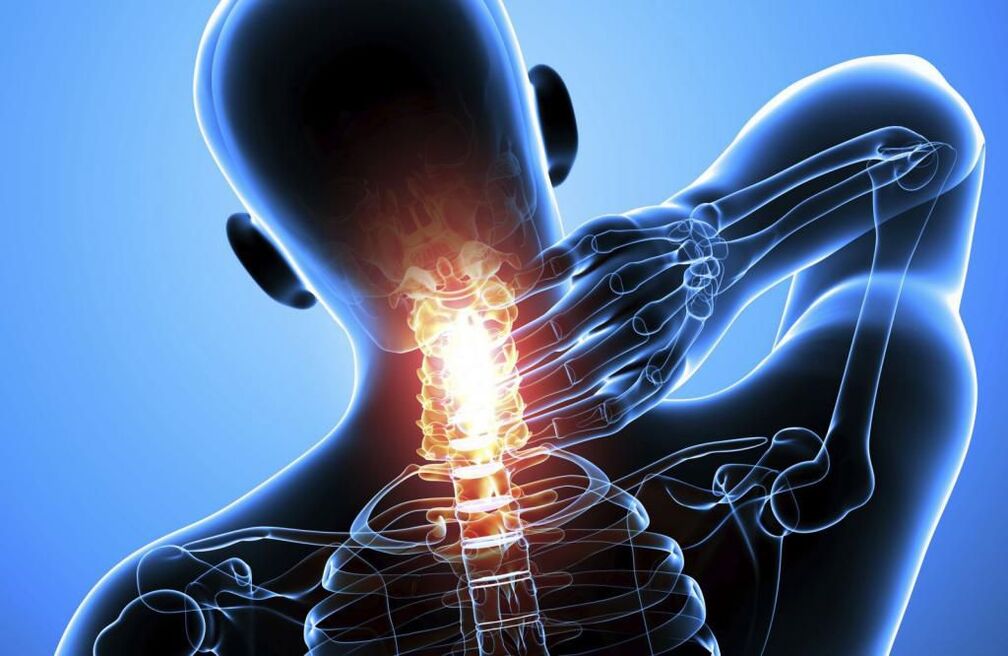
Symptoms of osteocondrosis in cervical spine
Osteocondrosis of cervical spine is a disease in which degenerative changes occur in the intervertebral disks.Originally, disks, there are cartilage rings that contain jelly -like content, dehydrated.This is usually the result of a sedentary lifestyle, long -term work on the computer, poor attitude, neck damage and a number of other factors.
This leads to a decrease in the strength of collagen fibers that form the annulus fibrosus -counter.As a result, its thickness gradually decreases, which becomes the main cause of the development of symptoms characteristic of cervical osteocondrosis:
- Throat pain in different degrees of intensity;
- Headaches, dizziness, loss of consciousness caused by the violation of the cervical spine arteries passing directly through the vertebrae, ie.The development of spine artery syndrome;
- fluctuations in blood pressure levels;
- Radicular syndrome, caused by clamping of the spinal cord roots accompanied by the irradiation of pain from the neck to the arms, up to the hands and fingers, to the head, shoulders, sensory disturbances in these areas, the appearance of goosebumps, numbness, etc.;
- a decrease in the area of motion of the neck, the appearance or intensification of pain when performing certain movements;
- Increased fatigue, impaired performance;
- tinnitus, impaired visual acuity, development of ENT -pathologies that are difficult to treat.
There are 7 vertebrae in the spine of the cervix.Most often, osteochondrosis affects discs placed between 5th and 6th as well as 6th and 7th vertebrae.
In such situations, contact a neurologist who prescribes an MRI.The results of this study make it possible to accurately identify osteocondrosis at any, even the earliest stage of development and choose treatment.
Development stages
Generally, there are 4 stages of development of osteochondrosis:
- Grade 1 - Pathological changes have just begun to appear on the intervertebral disk, so the symptoms are mild and are only observed from time to time.In such situations, treatment will be as effective and simple as possible.
- 2.
- Grade 3 - Pain becomes almost constant and can be complicated by the development of vertebral arteries syndrome as well as the formation of projections and intervertebral hernia.
- 4th degree - the disk is so destroyed that the possibility of movement in the affected spinal movement segment is almost excluded.In this case, severe pain is observed, radicular syndrome develops often, and one or both vortexes are clipped, leading to the appearance of characteristic symptoms.
Treatment of cervical osteocondrosis
Thus, the treatment tactics for cervical osteochondrosis depend on the severity of degenerative changes in the intervertebral disks, the patient's age and his individual properties.Therefore, it is always developed separately for each patient, but is always aimed at solving the following problems:
- eliminating unpleasant symptoms that aggravate the patient's quality of life;
- Improving the quality of blood circulation in the neck;
- improving metabolic processes in the affected area;
- eliminating the causes of degenerative-dystrophic changes in intervertebral discs;
- Reducing the risk of developing complications of osteochondrosis, ie.projections, intervertebral hernias, spondylosis, etc.
Generally at each step of the development of the disease, the use of different therapeutic goals is indicated.If it is enough in the 1st step to adjust your lifestyle and participate in training therapy, it is required in the 2nd phase a more comprehensive influence, in addition, including taking a variety of medicines, conducting manual therapy sessions, using orthopedic devices, etc.
However, patients must understand that it is impossible to achieve reverse regression of degenerative-dystrophic changes that have already occurred, especially if step 2 or more osteochondrosis is diagnosed.In such situations, the treatment will be aimed at improving the patient's well -being and stopping further progression of the disease.Sometimes it is possible to correct only the situation in the first phase of osteochondrosis, but at this stage of development, the pathology is extremely rarely diagnosed as patients perceive less discomfort in the neck as a sign of fatigue and do not consult a doctor.
In more severe cases, the treatment of osteocondrosis of cervical spine will be even more complex and prolonged.In any case, it is performed under the supervision of a neurologist with periodic follow -up examinations and adjustment of therapy depending on changes in the patient's well -being.
Lifestyle correction
All patients diagnosed with cervical osteocondrosis are advised to make certain changes in their lifestyle.In both cases, these recommendations vary depending on the properties of the person's professional activity and a number of others.
The vast majority of people are advised to increase their level of physical activity and take a break from work at least every hour to warm up if it involves sitting.In cases where the patient is actively involved in sports, it is recommended that he reduces the load on the cervix.Thus, it will be shown to give up ongoing, bouncing sports, weightlifting and wrestling.
People who are overweight are further recommended to take measures to reduce it, as well as adjust their diet.When osteocondrosis has already taken place, it is important that the diet meets the daily needs of the body as fully as possible.Therefore, it is worth giving up fast food and semi-finished products and bringing your diet closer to rational.This means that it is worth creating a menu so that half of the diet consists of vegetables and fruits, and it also contains a sufficient amount of proteins.
Drug treatment of cervical osteocondrosis
Drug therapy is mainly aimed at eliminating the unpleasant symptoms of osteocondrosis in cervical spine.As a rule, it is complex and includes the use of drugs from different groups, each of which solves specific problems.Therefore, it is also developed separately for each patient.
NSAIDS
Non-steroidal anti-inflammatory drugs or NSAIDs are a wide group of drugs that have not only anti-inflammatory but also painkillers.They are available in different dosage forms, including tablets, capsules, ointments, gels and creams as well as solutions for intramuscular administration.NSAIDs should only be used as needed, ie.When severe neck pain occurs.
For severe pain, NSAIDs can be administered intramuscularly.
The disadvantage of oral drugs from the NSAID group is their irritating effect on the mucosa of the abdomen and duodenum.This can provoke a worsening of the course of diseases in these organs, especially gastritis and gastric ulcer.To reduce such risks, proton pump inhibitors are prescribed in combination with them.
There are medications that have a more gentle effect on the gastrointestinal tract, which are widely prescribed to relieve pain and inflammation of osteocondrosis.More advanced drugs have already been developed, characterized by a selective effect, which is also often prescribed for osteochondrosis, but they are more expensive and are not available to all patients.
Corticosteroids and injections (blockades)
Corticosteroids are hormonal drugs prescribed for patients with severe inflammatory processes.They can cause a number of unwanted consequences of prolonged use, therefore they are prescribed in short courses in the most difficult cases.As a rule, the use of injection solutions is indicated as the method of these drugs is much easier to tolerate by the body and are less likely to cause side effects.
Corticosteroids are often used in combination with local anesthetics when performing blockades, that is, to quickly relieve very severe pain by introducing the prepared mixture into special points near the passage of the spinal cord nerves.The procedure requires certain skills and dexterity and can therefore only be performed in medical institutions by specially trained medical workers.Otherwise, the likelihood of developing unwanted consequences and complications is very high.
It is recommended to block no more than 4 times a year.
Muscle relaxants
Muscle relaxants are a group of drugs used to eliminate reflex muscle spasms caused by an acute inflammatory process.This often occurs with cervical osteocondrosis and causes severe neck pain, which further aggravates the situation.
Vitamins
Since osteocondrosis creates significant prerequisites for compressing the spinal cord roots, it is often indicated to take vitamin complexes that primarily contain B vitamins.They are directly involved in the transmission of nerve impulses, which is especially important in the development of radicular syndrome.
Chondroprotectors
Chondroprotectors are drugs that a lot of controversy flares up.They are based on substances used by the body to recover damaged cartilage tissue, which determines the indications for their use in cervical osteochondrosis.But at the same time, there is no compelling proof of their effectiveness in advanced forms of the disease.In the early stages of osteocondrosis, they actually have a positive effect on the condition of the intervertebral disks, leading to an improvement in the patient's well -being.And at later stages, they can only help inhibit the additional progression of degenerative changes in the intervertebral discs.
Chondroprotectors are produced in the form of powders for the manufacture of solutions, capsules, topical use products and solutions for intramuscular administration.The biggest positive effect was seen from the latter.
Current products
These are precisely the drugs available in the form of a gel, cream or ointment that patients often start using when signs of cervical osteocondrosis appear.They have different effects, including anti -inflammatory, painkillers, heating or reverse cooling and local annoying.
Often these products contain NSAIDs to help reduce pain, but are mainly effective in the early stages of osteocondrosis.The components of such drugs can also be menthol, hot pepper extract, hose or bee poison.
Local irritants are based on the principle of irritating the nerve endings of the skin, due to which there is a decrease in the severity of pain and increased blood flow within the application area.However, such remedies are only effective in the initial stages of the development of cervical osteocondrosis.
Preparations for improving microcirculation
Medicines in this group are used to improve the quality of blood circulation, which is especially necessary for vertebral arteries syndrome.A number of medications have a vasodilating effect that improves brain nutrition and helps eliminate tinnitus, headaches and dizziness.However, without effectively eliminating the factor that puts pressure on the spine, such treatment will only produce temporary results.
Exercise therapy
Physiotherapy is the basis for treating osteocondrosis of cervical spine.Today, there are many different proprietary and generally accepted methods of training therapy for cervical osteocondrosis, but patients need to understand that there are no universal exercises.A set of exercises must be chosen by a specialist on an individual basis, taking into account not only the scene for the development of degenerative-dystrophic changes, but also the patient's age, the nature of existing simultaneous diseases, the presence of radicular syndrome or the compaction of the spines.Therefore, different exercises may be indicated for the same patients with about the same changes in the intervertebral discs.
Generally, physiotherapy has the following goals:
- Strengthening the muscles of the neck and the upper shoulder band;
- activation of blood circulation in the affected area, which will contribute to the restoration of the fibrous rings of the intervertebral disks;
- Normalization of muscle tone.
It is necessary to perform training therapy every day.First, it is best to participate in special groups or work with a training therapy instructor individually.This allows you to 100% master the technique of performing each suggested exercise so that its implementation brings maximum advantage.The specialist helps you choose the optimal load and develop a program to increase it taking into account the patient's physical development level.
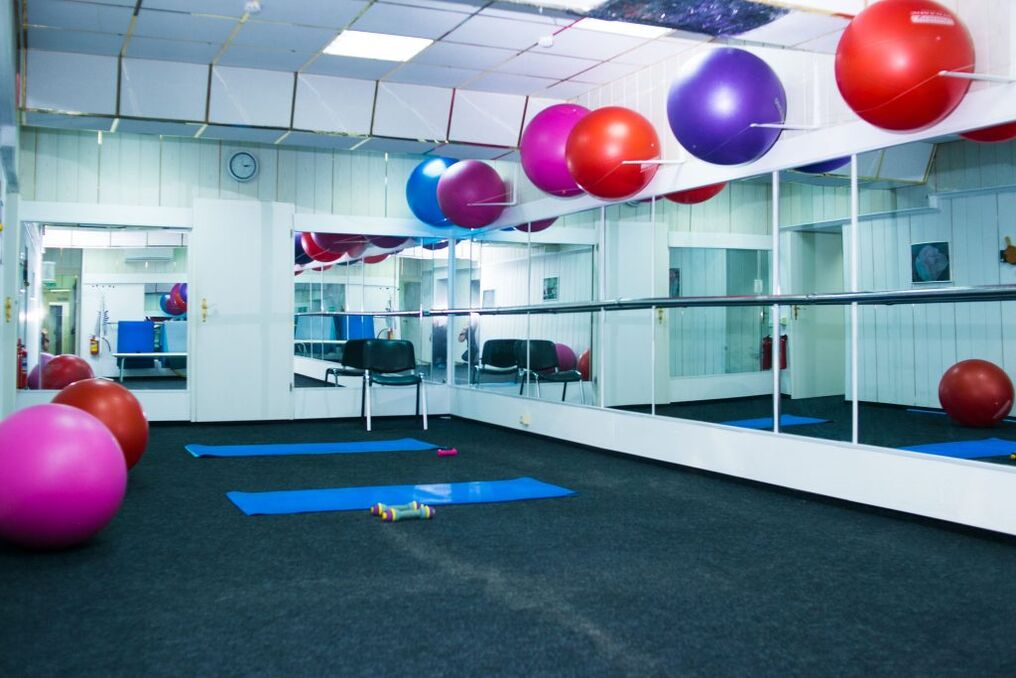
In the future, patients can practice training therapy independently at home.At the same time, it is important to approach this with full responsibility, to perform the exercises slowly, without haste and under comfortable conditions.However, if pain appears at any time during exercise, immediately stop performing the exercise that provoked its appearance and consult your doctor to determine the causes and correct the training therapy program for cervical osteocondrosis.
When doing exercise therapy, it is forbidden to do sudden, strong movements, rotate your head or perform exercises through pain.In such situations, there is a high risk of exacerbating existing changes in disks instead of achieving the expected advantage.
Swimming has a very positive effect on the condition of the spine.This is exactly the kind of sport that does not involve stress on disks but actively involves the muscles of the back and neck.As a result, the muscle corset is effectively strengthened and acts as a natural support for the spine.Therefore, if possible, patients are advised to visit the pool 2-3 times a week.
Manual therapy for cervical osteocondrosis
Manual therapy is one of the most effective methods of treating cervical osteocondrosis as it allows you to not only affect the muscles and soft tissue, but also the back.But it is very important to take a responsible approach to choosing a chiropractor, as wrong or too strong influence can lead to a worsening of the patient's condition and even the development of complications.Such a specialist must not only have a higher medical education and a license to practice manual therapy, but also have a good understanding of the features of anatomy and osteochondrosis and has sufficient experience.
Do not confuse manual therapy and therapeutic massage.The differences between these types of manual therapy are significant as therapeutic massage involves only soft tissue, while the doctor during manual therapy also works on the spine.
So each manual therapy session begins by ironing, which allows you to prepare the skin for more active subsequent effects.In the future, rubbing, kneading and clamping techniques are used that allow you to activate the blood flow in the collar area, neck and upper back.As soon as the skin and muscles are sufficiently heated and the patient is relaxed, the doctor begins to perform mobilization and manipulation techniques.They involve the implementation of turns with oscillating movements, pushing towards the most significant limitation of movement, leading to increased mobility of the spine and eliminating functional blocks.
Thanks to qualified manual therapy, it is thus possible to:
- Normalizes the placement of the vertebrae, eliminating increased pressure on the intervertebral disks and creates favorable conditions for their restoration;
- eliminating pain caused by cervical osteocondrosis and its complications;
- Bring overly relaxed muscles to normal tone and relax spasmodic muscles;
- Increase neck mobility;
- Remove the pressure on the spines and thereby normalize the blood flow to the brain;
- Remove the compression of the spinal cord roots and thereby normalize the cord of bioelectric impulses for these organs for which they are responsible and reduce pain.
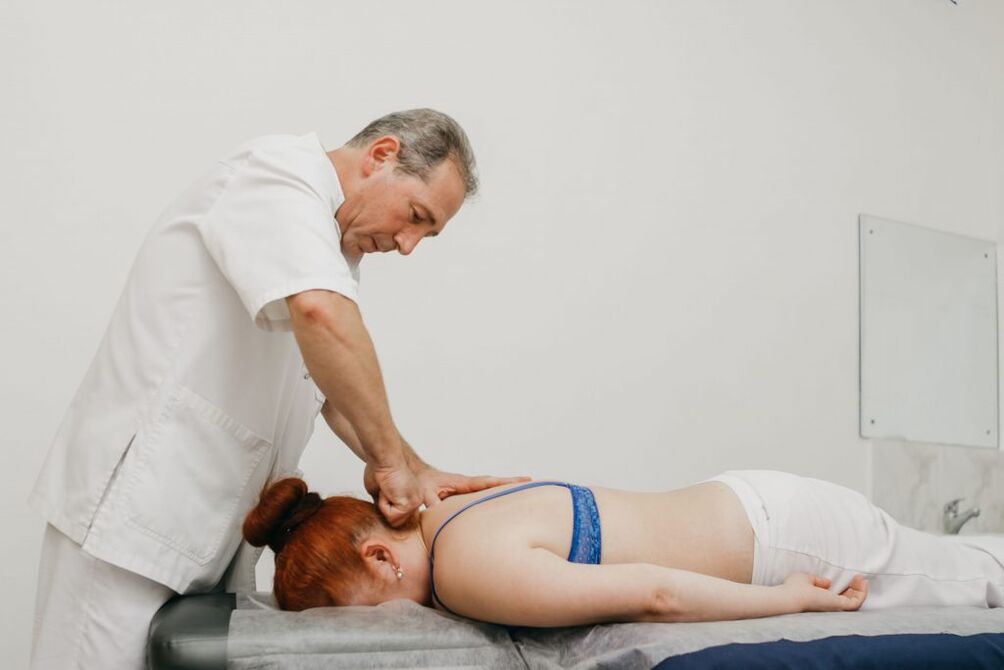
It is especially worth highlighting the author's method of manual therapy.It involves the use of special, patented impact techniques that allow you to achieve a pronounced result after the 1st session, not only from the part of the neck affected by osteocondrosis but also on the entire body.As a result, not only the pain and other symptoms of the disease disappear, but also the function of all organs is improved and the immune system is strengthened.The second and subsequent sessions improve the positive effect and consolidate the one that guarantees that if other medical recommendations are followed, the remission period will last as long as possible.
Self -massage
To improve their well -being, patients can regularly perform self -massage of the neck to relieve the feeling of fatigue and reduce pain.To do this, sit in a comfortable position and try to relax your neck muscles.Then perform stroking movements with the palms that gradually move to circular rubbing and catch the shoulder area.All movements are performed from the spine without sudden and strong pressure.In this case, you can use local anti -inflammatory drugs recommended by your doctor.
Physiotherapeutic treatment
Physiotherapy is indicated outside the acute inflammatory process.It allows you to consolidate the treatment results obtained and further improve the patient's condition.As a rule, a course of 10-15 procedures is prescribed separately for each patient.It could be:
- Electrophoresis - involves the use of electrical current to ensure a deeper penetration of the stated drugs.
- Magnetotherapy - helps activate blood circulation in the area of influence and stimulate the course of metabolic processes.In addition, magnetic therapy sessions have a pain -relieving effect and helps eliminate swelling.
- Laser therapy has an anti -inflammatory, vasodilating effect, leading to a decrease in severity of pain.
- Ultrasound therapy is a method of physiotherapy based on the positive effect of ultrasound waves on the body.They help reduce the sensitivity of nerve endings and also have an anti -inflammatory and analgesic effect.
- Diadynamic currents - procedures lead to a reduction in pain, improve tissue nutrition, have a positive effect on the muscles and help eliminate inflammation.
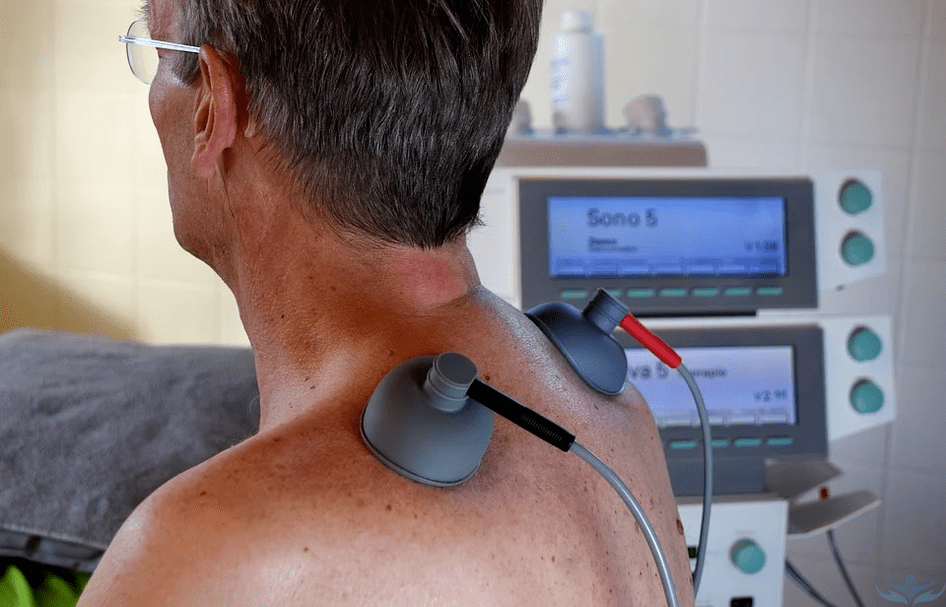
Traction therapy
When the vertebrae are assembled due to the flattening of the intervertebral disks, wooden capi is indicated using a Glisson loop.The essence of the method is to apply an accurately adjusted tensile load to the cervical spine using a special device that attaches the head and has a load on the opposite side.Such procedures help to increase the distance between the vertebrae, leading to a decrease in pressure on disks and creating favorable conditions for their improvement.But such therapy can only be prescribed by a doctor.
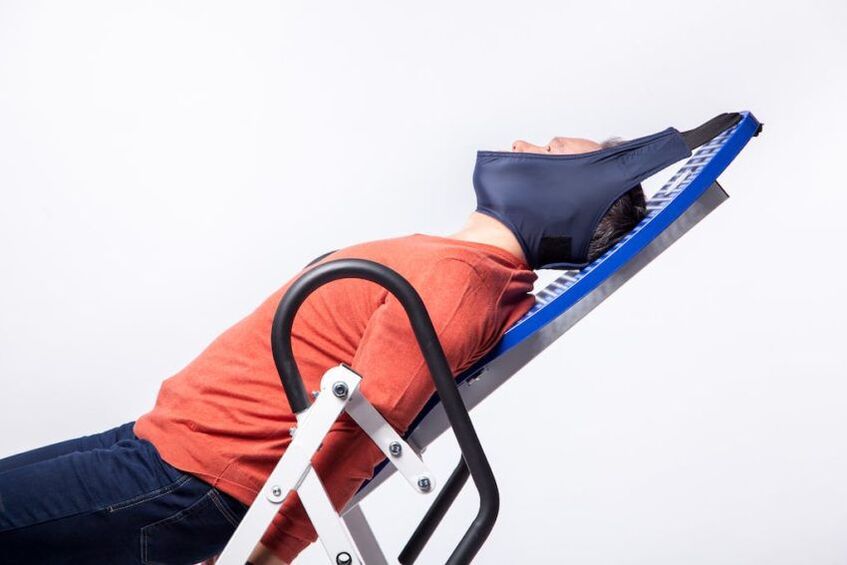
Needle applicator
Iplicator is a simple, affordable agent for reflexology in the neck area.This can be a plate with spikes to be placed under the neck or a similar device, but in the form of a roll.Thanks to the icing of the thorns, skin receptors are irritated, leading to more active blood flow to the affected area.
Some patients notice a decrease in neck pain after using the applicator as well as an increase in performance, improved sleep quality and restoration of neck mobility.However, if you have skin lesions in the affected area or vascular diseases, do not use a needle applicator.
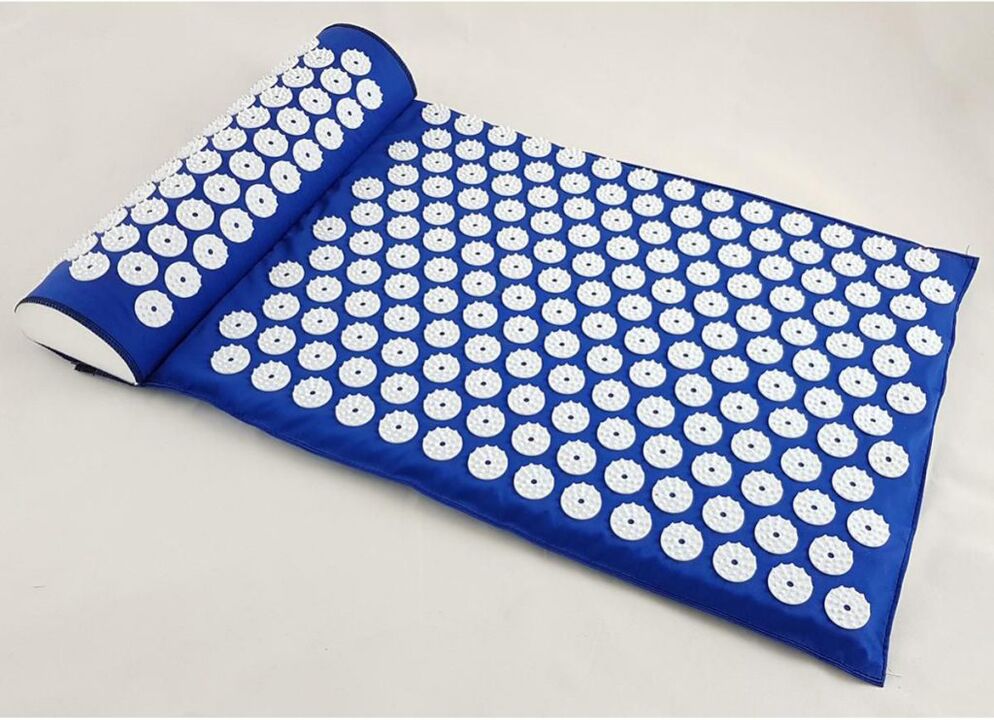
Orthopedic units
To reduce the load on the cervical spine, it is recommended to change the mattress and pillow to orthopedic as dormant on an unpleasant cushion causes further compression of the spines and nerve strains during sleep.Orthopedic products are free of this disadvantage and ensures maintenance of the physiologically correct placement of the spine along the entire length, thereby reducing the progression of existing osteochondrosis.
But it is important to choose the right cushion and mattress to match the patient's individual properties and contain appropriate filling.Thanks to them, it will also be possible to improve the quality of sleep and wake up in the morning cheerful and rest.
Some patients are also recommended to wear a shahan's collar.It is a removable orthopedic device that allows you to fix the neck and reduce the load markedly on the cervix, for example, when working on a computer or after suffering an injury.The collar is put on before the expected load on the neck, but must be removed during sleep and rest.They differ in design, height, fixing rate so that only the participating doctor can choose the optimal.
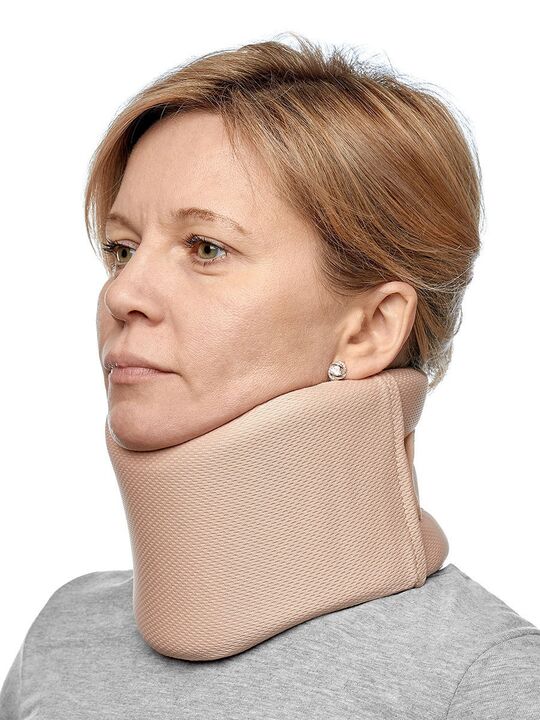
Thus, the treatment of cervical osteocondrosis can be quite long and complex.You need to be prepared for this because there is no other way to stop the development of changes in the intervertebral discs, avoid the development of complications and the need for surgery.However, in most cases, patients' condition is improved within the first weeks after treatment.At the same time, it is important not to self -medicate, but to contact a neurologist, as only a qualified specialist will be able to determine the degree of osteocondrosis and choose the most appropriate treatment for the disease for a particular patient.

















































